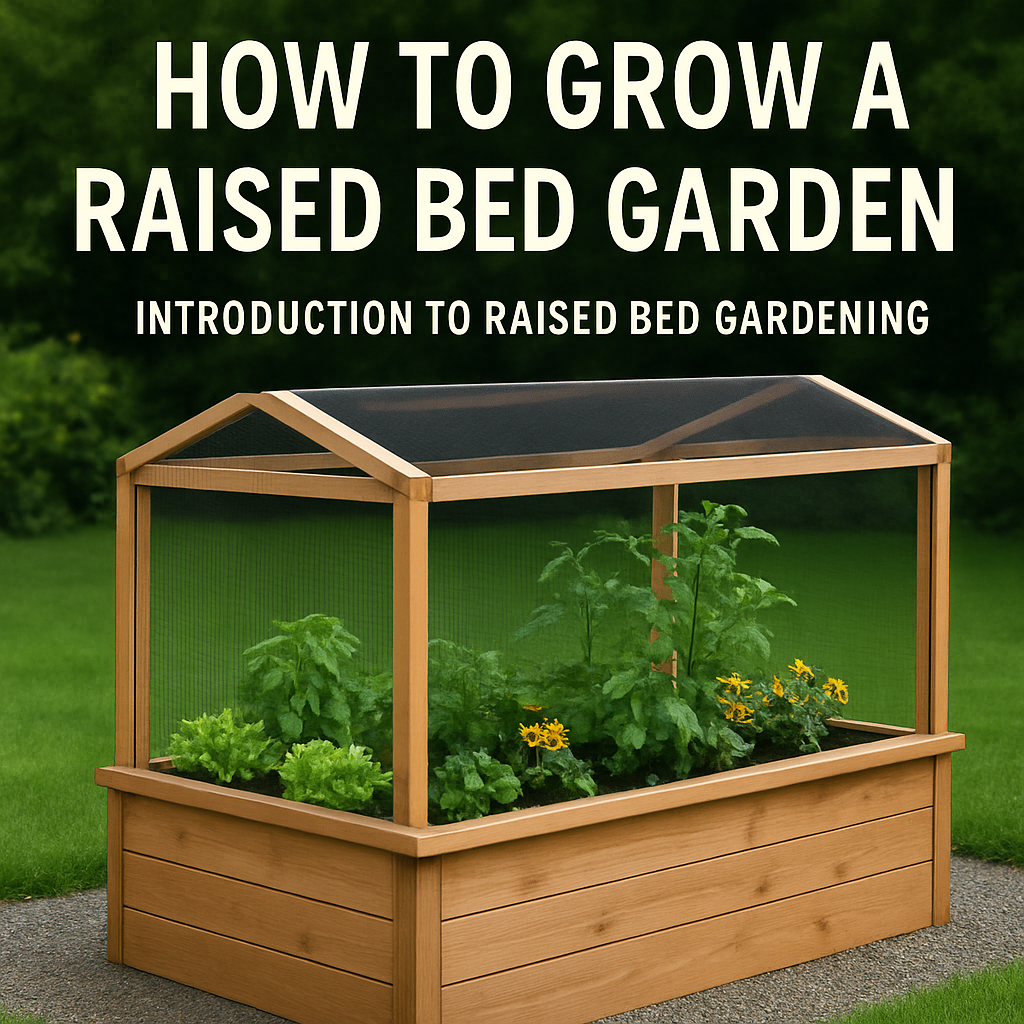
Introduction: Why Raised Bed Gardening is a Game Changer
Raised bed gardening is one of the easiest and most satisfying ways to grow your own vegetables, herbs, and flowers—especially if you’re short on space or working with tough soil. By creating a defined area with rich, well-drained soil above ground level, you gain control over your growing environment and make garden maintenance much simpler.
If you’ve ever dreamed of stepping outside and harvesting your own dinner, this is your starting line. Raised beds are perfect for beginners, weekend warriors, and even seasoned green thumbs looking to maximize results with minimal mess.
What Is a Raised Bed Garden?
A raised bed garden is exactly what it sounds like—a garden bed that sits above the natural ground level, usually framed with wood, stone, or composite materials. The bed is filled with a custom soil mix, offering excellent drainage, better root growth, and fewer weeds.
They can be built at ground level or elevated to waist height for easier access. Raised beds are flexible, scalable, and work in just about any space—from suburban backyards to urban patios.
Benefits at a Glance
- Better Soil: You control what goes in, so your plants get the best start.
- Improved Drainage: No more soggy roots.
- Weed Reduction: Less bending and less weeding.
- Easy Maintenance: Perfect for beginners and folks with limited mobility.
- Longer Growing Season: Soil warms faster in spring.
The Basics of Getting Started
Here’s a quick peek at what’s involved in growing a raised bed garden:
1. Choose the Right Location
- Look for 6–8 hours of sun per day
- Avoid low spots that collect water
- Make sure it’s near a water source
2. Build or Buy a Raised Bed Frame
- Popular size: 4 ft x 8 ft, with 10–12 inches depth
- Use safe, rot-resistant materials like cedar, redwood, or composite
- Leave pathways between beds for easy access
3. Fill with Good Soil
- Blend topsoil, compost, and a material like perlite or peat moss
- A rich, loose mix helps roots grow and retain moisture without getting soggy
4. Pick What to Grow
- Start with easy crops: lettuce, tomatoes, peppers, carrots, basil
- Choose what grows well in your local climate and season
5. Water, Mulch, and Maintain
- Water deeply a few times a week (not every day)
- Mulch to retain moisture and prevent weeds
- Keep an eye out for pests and remove any dead leaves or diseased plants
A Friendly Note for First-Timers
Starting a raised bed garden doesn’t require a green thumb or a big budget. With a few materials, a little effort, and some sunshine, you’ll be amazed how quickly you can turn a patch of yard (or even a patio!) into a productive garden space. Mistakes will happen—that’s part of the fun. The good news? Plants are surprisingly forgiving.
What’s Next?
This page is just the beginning! In this section of HelpfulHardwareGuy.com, we’ll dig deeper into topics like:
- How to build a raised bed step-by-step
- The best soil mixes for raised gardens
- Seasonal planting guides
- Pest control without chemicals
- And more!
Stick with us, and your backyard might just become your new favorite room in the house.